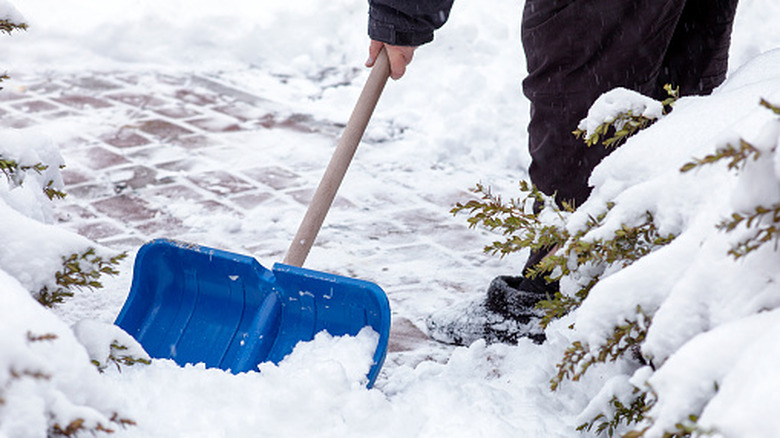What The Old Farmer's Almanac Predicts For Precipitation This Upcoming Winter
Keeping an eye on the weather, even in the winter, is a habit gardeners develop over time. For those in mild climates, it's all about figuring out how often they'll need to water some of the outdoor plants that can flower in the winter. Colder state dwellers could be more concerned about hard frost warnings or snowfall. Sometimes, winters with heavy snow even offer a warm blanket of insulation for perennials or crops like kale. So, how much precipitation we get in the winter is helpful information. This year, the Old Farmer's Almanac's 2025 to 2026 winter forecast predicts drier weather for most of the United States.
The Old Farmer's Almanac has been in the long-term weather predicting business since 1792. Year after year, the Almanac helped farmers decide when to plant crops and what to plant. They use a variety of factors to come up with their forecasts, including looking at solar flares and other sun activity, climate trends, and historical weather patterns, all combined inside a proprietary formula that they keep secret.
Of course, people can and do debate how accurate their long-term weather predictions really are. The Old Farmer's Almanac claims an 80% accuracy for their forecasts, but a University of Illinois study found they got it right only a little over 50% of the time. Still, it can't hurt to check out The Old Farmer's Almanac forecast for the upcoming winter. Might as well see where we could need our umbrellas or snow boots this December, January, and February.
Drier winter this year for many, but not all
For those hoping for a wet winter, most of the U.S. might be disappointed. According to the Almanac, states along the West Coast, and through the Midwest, Texas, and some of the South will likely see less precipitation than normal, which includes snow. One factor contributing to a drier forecast might be the diminishing La Niña, a weather pattern created by Pacific Ocean temperatures, which typically leads to more rain.
Notable exceptions, however, include Florida, as well as parts of the Southwest, which might be in store for more rainfall than usual. It's also true that intermountain states like Utah, Idaho, parts of Nevada, and the eastern parts of Washington could get a fair amount of precipitation as well. Even the Carolinas might expect bigger snowfalls this year. So it may be the perfect time to try making a homemade snowplow!
Otherwise, less snow might mean you ought to mulch more in the fall, especially over tender perennials that are susceptible to fluctuations in temperatures. Mulching could be a good idea in general because the Almanac warns that Arctic air might again get displaced this winter. This means the polar vortex could slide down into the U.S., randomly plunging temperatures into the low or negative digits.

